So, how many calories are there in gulab jamun? Well, that’s a question many dessert enthusiasts pose when they want to keep things delicious yet healthy. Knowing what the calorie count is in gulab jamun is not only about numbers, however. It’s actually to know what you’re eating, how it affects your body, and what are your alternatives. In this article, you’ll be acquiring some good insights on ingredients, calorie amounts, health aspects, comparison, and a few wiser choices you can make.
What Is Gulab Jamun Made Of?
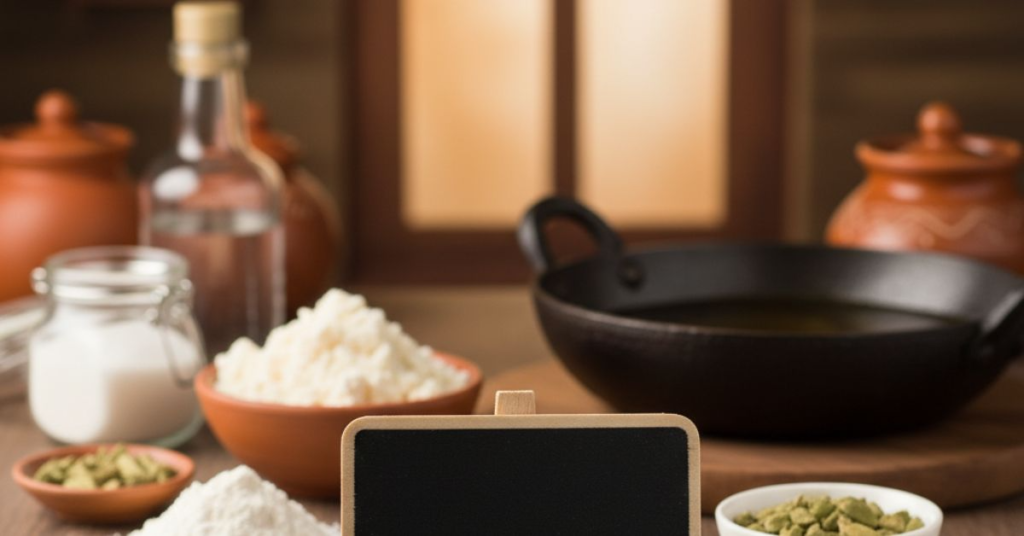
Gulab jamun is a soft, syrupy dessert from the Indian subcontinent. The classic recipe uses khoya (reduced milk solids) or mawa, along with a little flour (maida) to bind. The dough is shaped into small balls, fried in ghee or oil, and soaked in sugar syrup flavored with cardamom and rose water. Some modern versions use milk powder instead of fresh khoya. Some recipes replace ghee with oil or use paneer-based dough. Because it is fried and soaked, the dessert absorbs syrup and fat, which heavily influence its calorie content.
In traditional kitchens, chefs may add saffron, nuts, or semolina to the mix. These ingredients change texture, taste, and nutritional value slightly. The way the syrup is cooked—thick syrup or thin—also affects how much sugar the gulab jamun can soak up. All these variations matter when you calculate How Many Calories Are in Gulab Jamun?
You will like this: Best Chicken Haleem Recipe—Rich, Spiced, and Comforting
Calories in One Standard Gulab Jamun
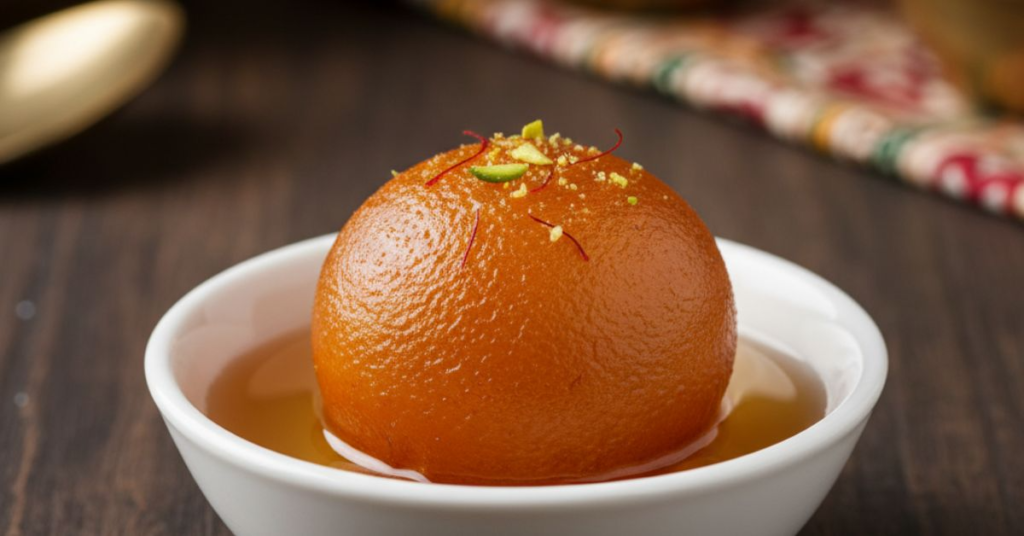
A standard gulab jamun piece usually weighs between 40 to 50 grams after frying and soaking. Based on food composition databases and lab measurements, one piece of gulab jamun of that size contains approximately 150 to 200 calories.These values may shift based on syrup thickness, frying medium, and size. Most of the calories come from refined sugar in the syrup and saturated fats from frying.
Here is a typical nutrient breakdown for one piece (≈ 45 g):
| Nutrient | Approximate Amount |
| Calories | 160 kcal |
| Carbohydrates (mostly sugar) | 25 g |
| Fat | 6 g |
| Protein | 2 g |
| Sodium | 40 mg |
Calories in Different Types of Gulab Jamun
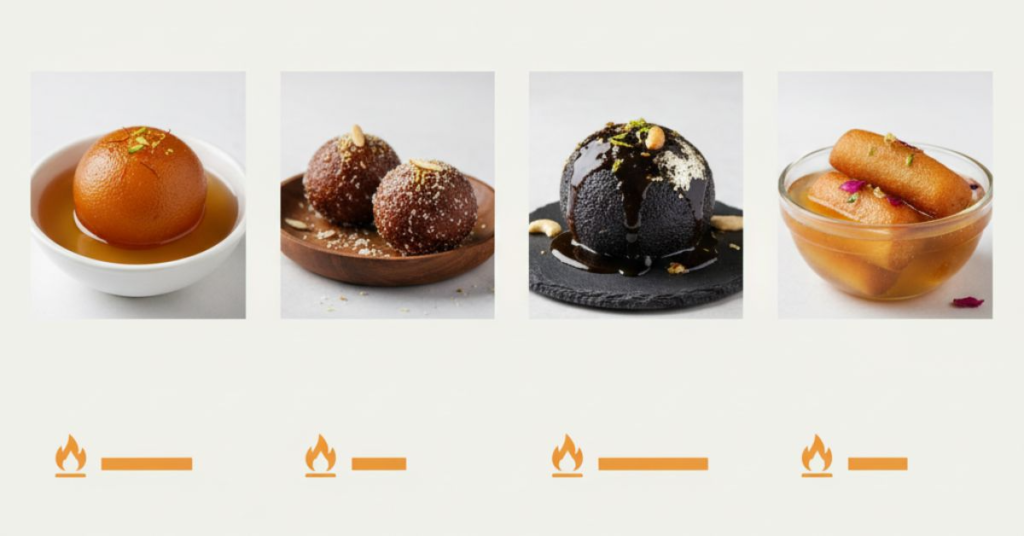
Homemade versions tend to vary widely. If you fry in ghee versus oil, the fat content changes. If you make them smaller, the calorie count drops. Storebought or packaged gulab jamun often list nutrition on the label. Famous brands like Haldiram’s, Bikano, or instant mixes like Gits come with standard serving sizes and calorie info. In restaurants or sweet shops, the pieces are often larger or dipped in thicker syrup, so calories can go up to 220–250 for a single piece.This table shows why knowing the size and source matters. When someone asks How Many Calories Are in Gulab Jamun? you have to ask, “Which type?”
Here is a comparison table:
| Type of Gulab Jamun | Approx Weight | Estimated Calories |
| Homemade, small size | 35 g | 120–140 kcal |
| Homemade, standard size | 45 g | 150–200 kcal |
| Store‑bought packaged | 50 g | 170–210 kcal |
| Restaurant/dhaba style | 55–60 g | 200–250 kcal |
Factors That Affect Calorie Count
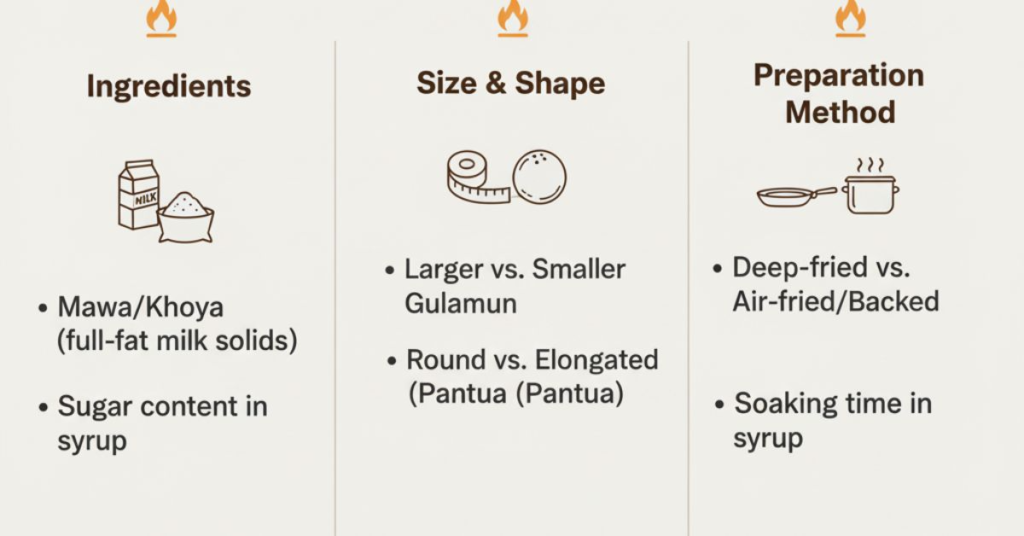
Size is the first factor. A larger gulab jamun holds more syrup and fat. The second factor is how much syrup is absorbed. If the syrup is very thick and you soak the pieces for long, they absorb more sugar. The third factor is the frying medium: gulab jamun fried in ghee often contains more saturated fats than those fried in vegetable oil.
Also, whether you use full-fat milk solids, low-fat milk powder, or a paneer base affects calorie content. Finally, if you add nuts or additional flavorings like saffron or cashews, the calorie count nudges upward.Every variation alters the number. So depending on all these factors, How Many Calories Are in Gulab Jamun? can range from a modest 120 kcal to a heavy 250 kcal per piece.
Read more: How to Make Chicken with Black Pepper | Quick Pakistani Style Recipe
Gulab Jamun vs. Other Indian Sweets Calorie Comparison
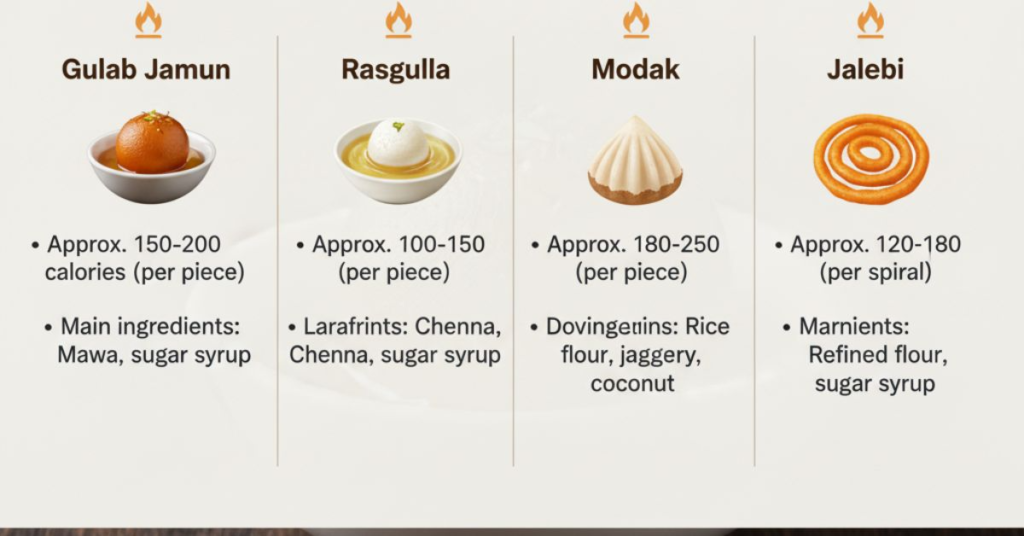
When you compare gulab jamun to other Indian desserts, you see differences in sugar, fat, and overall calorie density. Rasgulla, for example, is often less calorie‑dense because it’s not fried and soaked heavily. Jalebi, on the other hand, is deep‑fried and soaked in syrup, so its calorie count can rival or exceed that of gulab jamun. Kaju katli is nut-based and rich, so per piece it may have comparable or higher calories despite smaller size. Barfi, made of condensed milk or nuts, tends to be heavy in fat and sugar as well.
| Sweet Name | Typical Serving Calories | Notes |
| Gulab Jamun | 150–200 kcal | Deep‑fried + syrup |
| Rasgulla | 80–120 kcal | Boiled cheese balls in syrup |
| Jalebi | 150–200 kcal | Fried coils soaked in syrup |
| Kaju Katli | 120–170 kcal | Nut and sugar based |
| Barfi | 130–180 kcal | Condensed milk / nut creation |
Is Gulab Jamun Healthy? Nutritional & Health Considerations
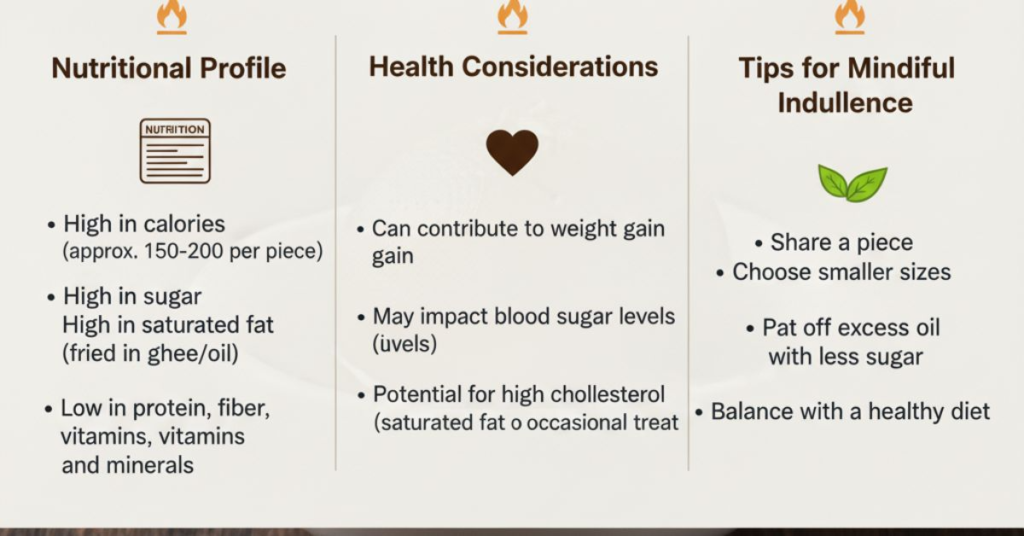
A dessert this rich can’t really be called “healthy” in the strict sense. The high sugar and saturated fat content make gulab jamun a treat, not a staple. After eating one, your blood sugar may spike—this is risky for those with diabetes or insulin sensitivity. It offers minimal fiber, vitamins, or protein to balance out the sugar load. Frequent consumption may contribute to weight gain, high cholesterol, or metabolic strain.
For someone managing weight or blood sugar, gulab jamun should be occasional. If you are mindful, you can plan it into your diet, maybe pairing it with protein or fiber. But don’t expect it to be healthy food. Instead, view it as a dessert to savor moderately.
Tips to Reduce Calories in Gulab Jamun
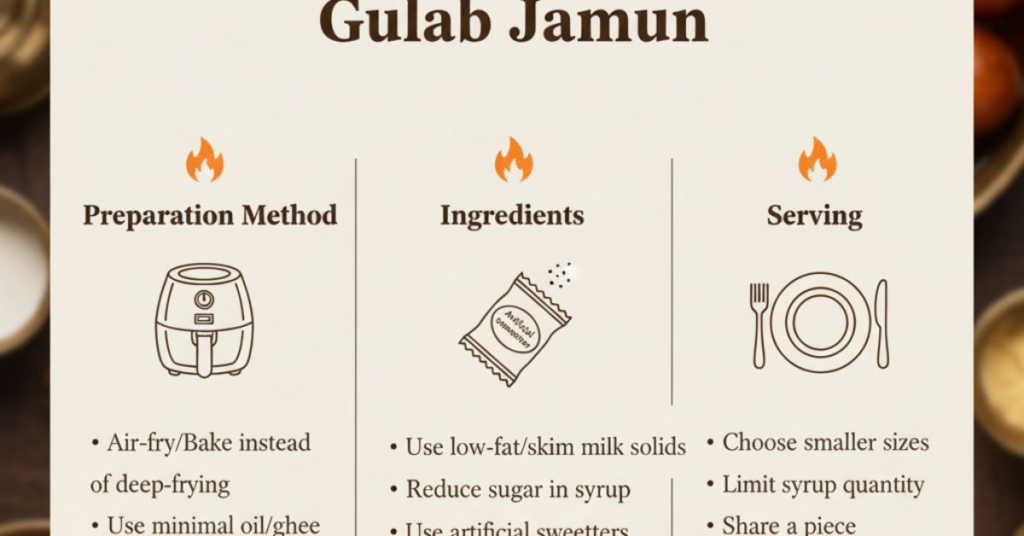
Many people want to enjoy sweets without feeling guilty. If you’re one of them, here are some simple ways to reduce the calories in your gulab jamun.First, try baking or air-frying instead of deep-frying. Traditional gulab jamun is fried in ghee or oil, which adds a lot of fat. Baking helps reduce this while still keeping the dessert soft and tasty.Second, choose natural sweeteners. Instead of white sugar, you can use jaggery, honey, or sugar-free syrups. These are lighter and may be better for your blood sugar, especially for people with diabetes.
Third, make smaller pieces. Most of the calories come from the size and the syrup. Making smaller balls means fewer calories per serving and better portion control.Also, try using low-fat milk powder or paneer instead of full-fat khoya. This reduces the fat content without losing the flavor. You can also limit the soaking time in the syrup to avoid excess sugar absorption.These small changes make a big difference. They don’t completely remove the calories, but they help you enjoy gulab jamun in a healthier way.
Low‑Calorie or Healthier Alternatives
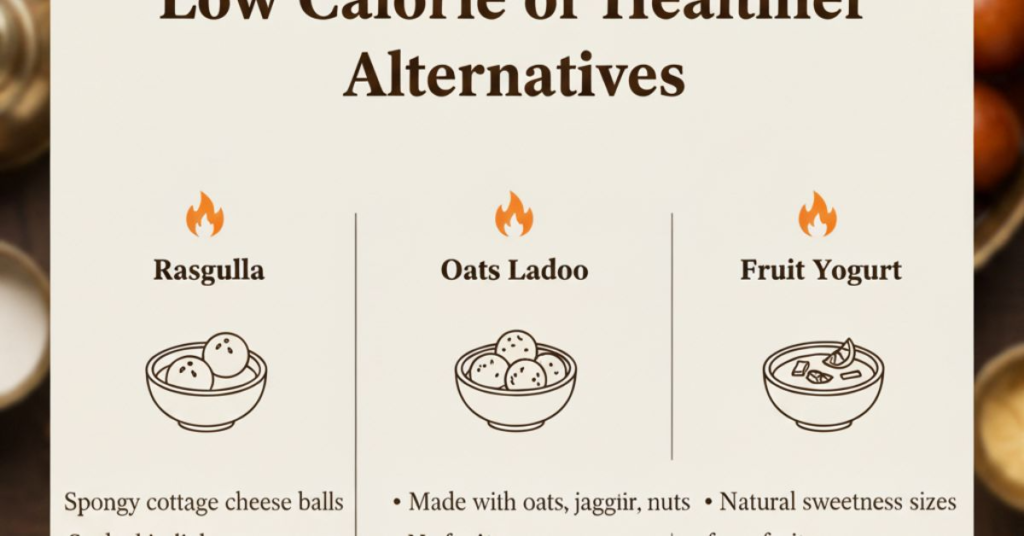
If you love gulab jamun but want a lighter version, there are tweaks you can try. One method is baking or air frying instead of deep frying, which cuts down the fat. Use sugar-free syrup or jaggery in place of refined sugar. Use low-fat milk powder, skimmed milk solids, or paneer to reduce fat.
You can also make mini gulab jamun — smaller pieces mean fewer calories. Serve them with yogurt or fresh fruit to reduce the sugar-to-nutrition ratio.These alternatives won’t replicate the exact texture or flavor, but they can get close enough so you don’t miss out while cutting calories.
Real-Life Example Counting Calories with Gulab Jamun
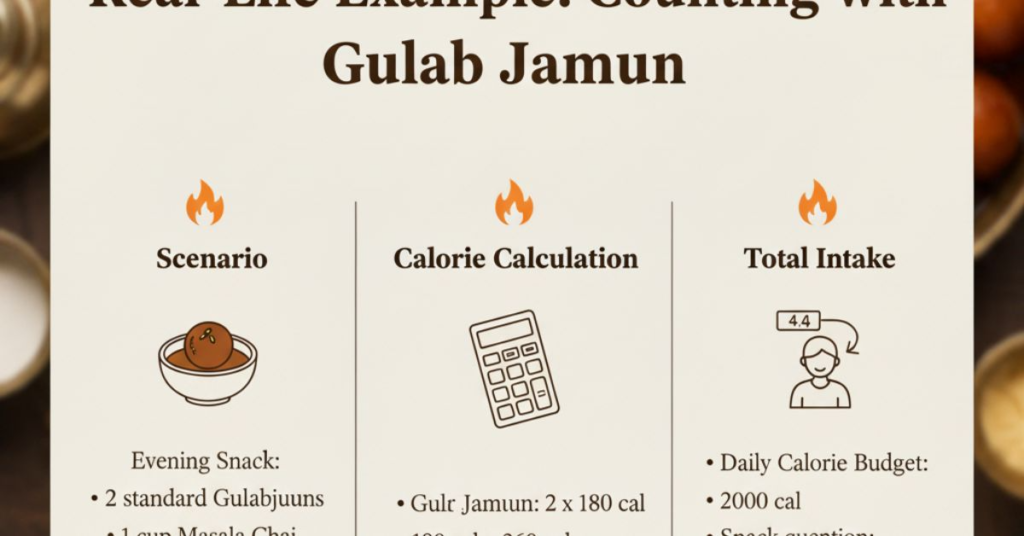
Let’s look at a real-life case. Rina is a 30-year-old working woman who loves sweets. She’s trying to lose weight, and she tracks everything she eats. One evening, she eats two pieces of gulab jamun at a party. Each piece weighs around 45 grams.That’s about 170 calories per piece, so she consumes 340 calories in total. Rina knows her daily limit is 1,800 calories. This means almost 20% of her daily intake went to just two pieces of dessert.
To balance this, she skips sugary drinks that day and adds a 30-minute walk after dinner. She also eats a light dinner with more vegetables and protein.This example shows how even high-calorie desserts like gulab jamun can fit into your diet if you plan carefully. It’s not always about avoiding; it’s about adjusting.
FAQ’’S
How many calories are in 2 pieces of gulab jamun?
Two gulab jamuns have around 320 to 400 calories, depending on size and ingredients. That’s nearly equal to a full meal.
Can I eat gulab jamun if I have diabetes?
Gulab jamun is high in sugar, so diabetics should avoid it or eat very small amounts with caution. Sugar-free versions are safer.
Is baked gulab jamun better than fried gulab jamun?
Yes, baked gulab jamun has less fat and fewer calories. It’s a healthier choice if you’re watching your weight.
Can I eat gulab jamun while trying to lose weight?
Yes, but only in small portions and not too often. Balance it with low-calorie meals and exercise.
How can I make gulab jamun with fewer calories?
Use low-fat milk, bake instead of fry, and soak in light syrup. Smaller sizes also help reduce total calories.
Conclusion
You now know How Many Calories Are in Gulab Jamun? and why the number shifts so much. That “melt in your mouth” treat is calorie dense, thanks to syrup and deep frying. But if you control portions, choose healthier versions, or pick smaller sizes, you can still enjoy it without derailing your goals. Remember: moderation is your best friend when it comes to desserts like gulab jamun.

